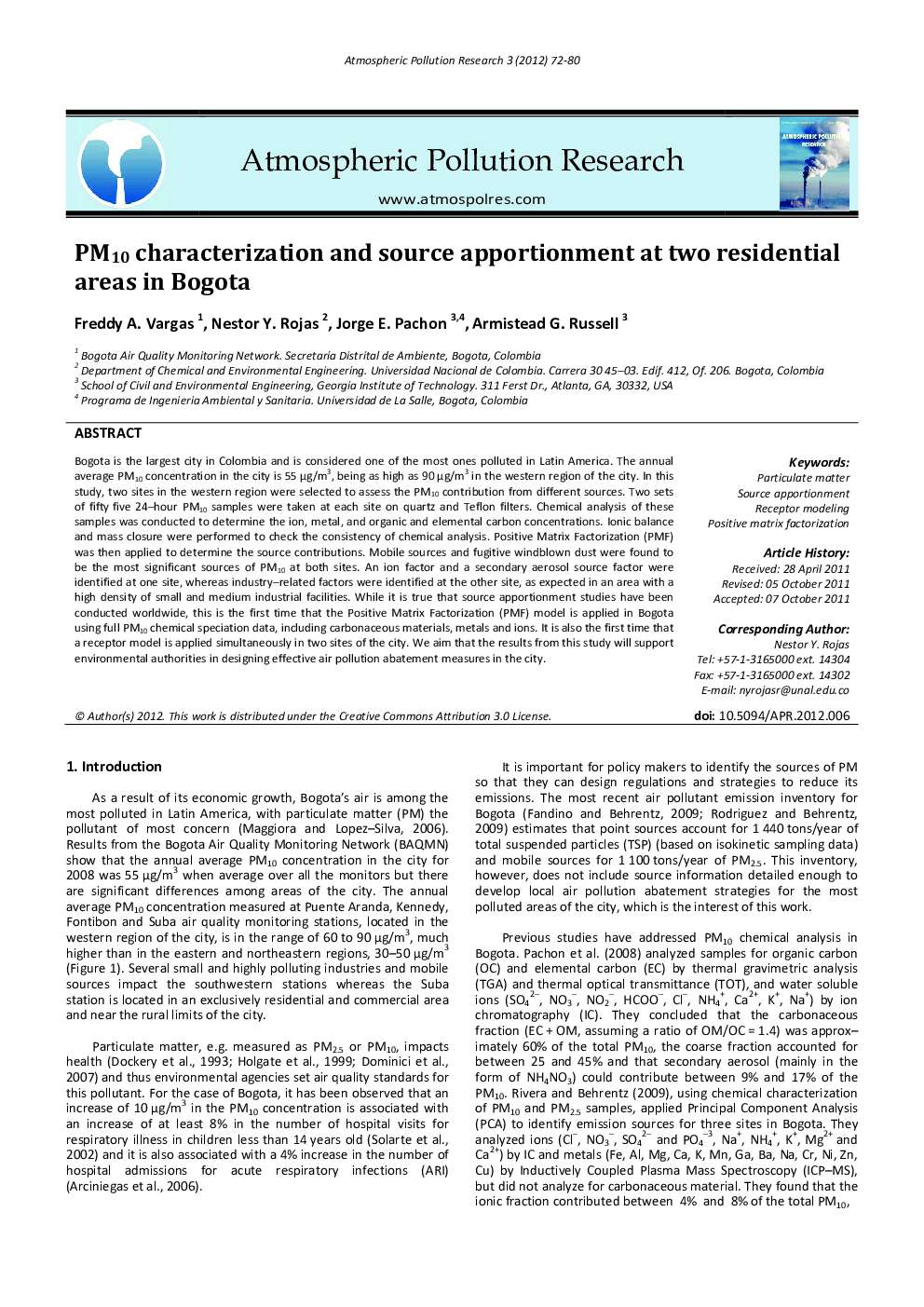| Article ID | Journal | Published Year | Pages | File Type |
|---|---|---|---|---|
| 4434872 | Atmospheric Pollution Research | 2012 | 9 Pages |
Bogota is the largest city in Colombia and is considered one of the most ones polluted in Latin America. The annual average PM10 concentration in the city is 55 μg/m3, being as high as 90 μg/m3 in the western region of the city. In this study, two sites in the western region were selected to assess the PM10 contribution from different sources. Two sets of fifty five 24–hour PM10 samples were taken at each site on quartz and Teflon filters. Chemical analysis of these samples was conducted to determine the ion, metal, and organic and elemental carbon concentrations. Ionic balance and mass closure were performed to check the consistency of chemical analysis. Positive Matrix Factorization (PMF) was then applied to determine the source contributions. Mobile sources and fugitive windblown dust were found to be the most significant sources of PM10 at both sites. An ion factor and a secondary aerosol source factor were identified at one site, whereas industry–related factors were identified at the other site, as expected in an area with a high density of small and medium industrial facilities. While it is true that source apportionment studies have been conducted worldwide, this is the first time that the Positive Matrix Factorization (PMF) model is applied in Bogota using full PM10 chemical speciation data, including carbonaceous materials, metals and ions. It is also the first time that a receptor model is applied simultaneously in two sites of the city. We aim that the results from this study will support environmental authorities in designing effective air pollution abatement measures in the city.
